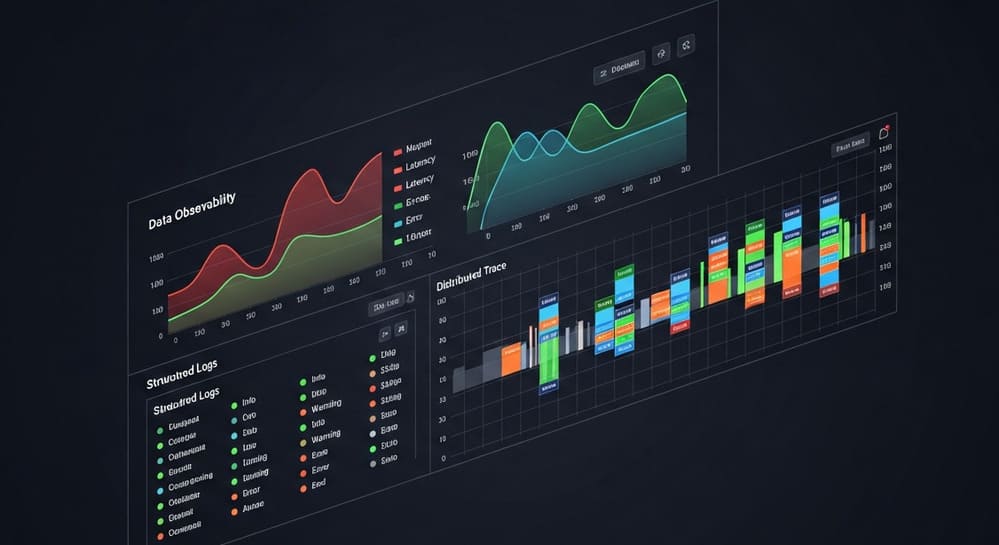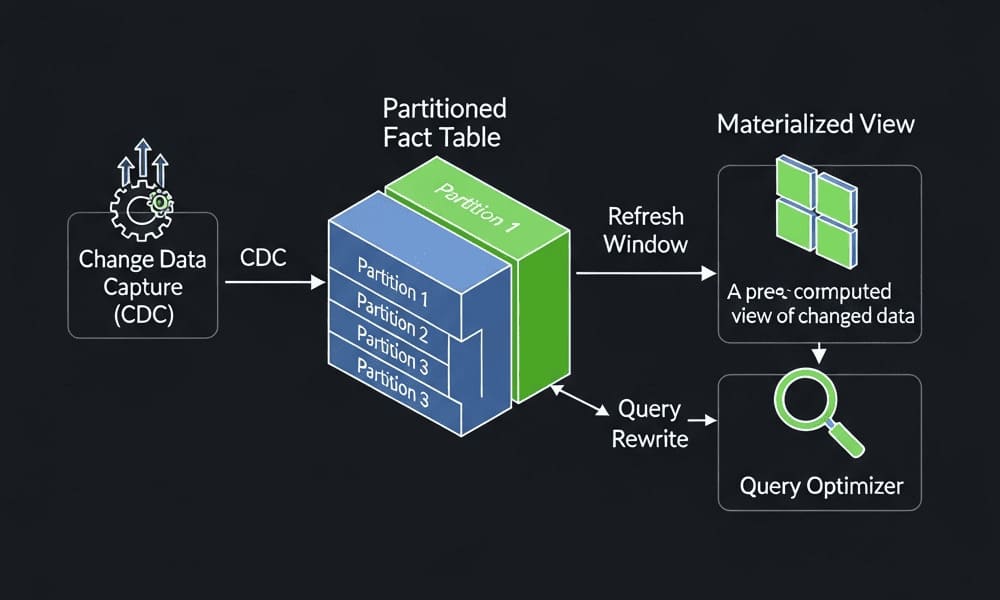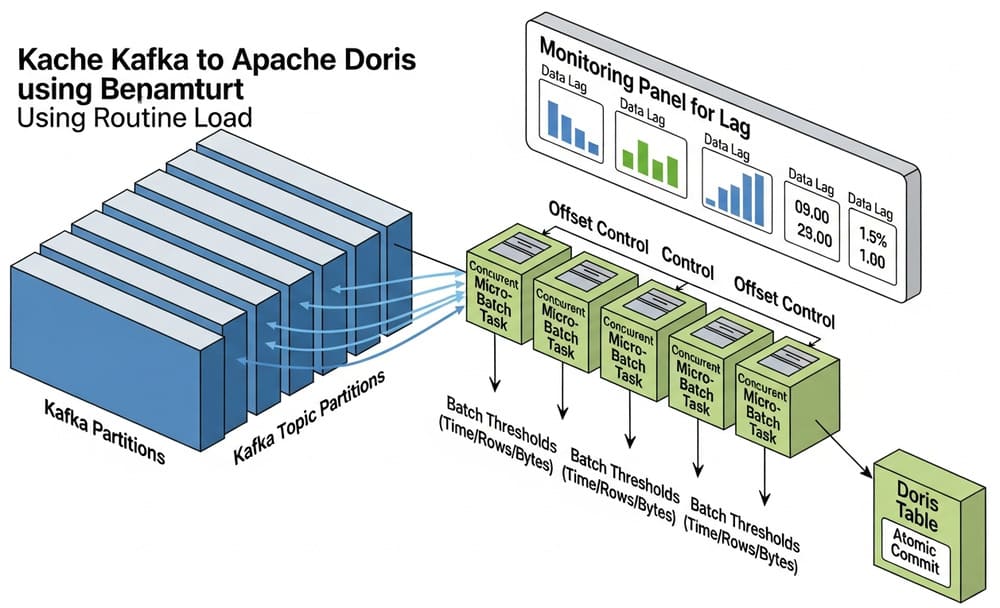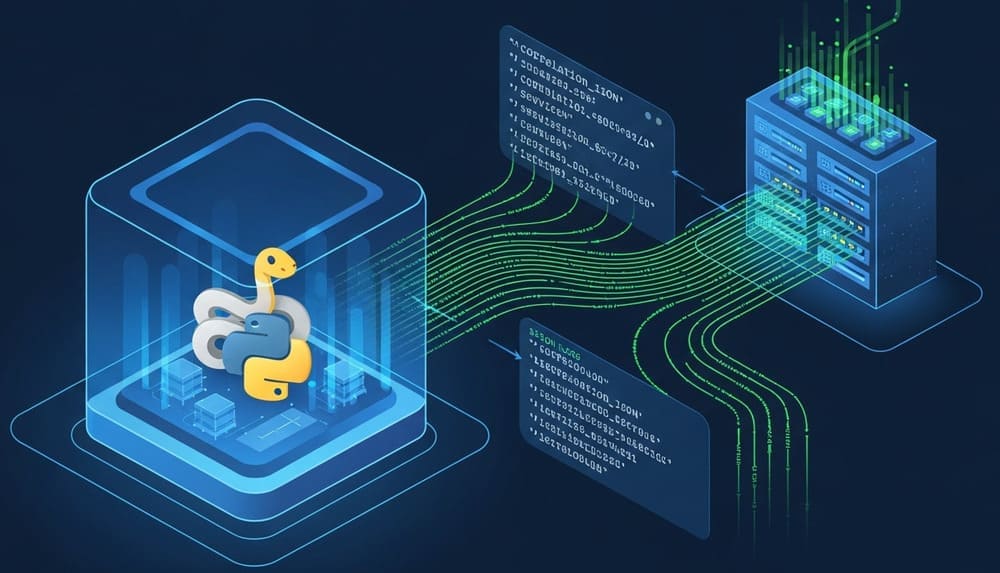The Foundation of Modern AI and Machine Learning in 2025
In the rapidly evolving landscape of artificial intelligence and machine learning, supervised learning stands as one of the most fundamental and widely used approaches. As we navigate through 2025, this powerful technique continues to drive innovations across industries, from healthcare diagnostics to financial forecasting and beyond. But what exactly is supervised learning, how does it work, and why has it become so essential in our increasingly data-driven world?
What Is Supervised Learning?
At its core, supervised learning is a type of machine learning where algorithms learn from labeled training data to make predictions or decisions without being explicitly programmed to perform the task. The term “supervised” refers to the learning process in which the algorithm is provided with input-output pairs, where the desired output (or “label”) is known.
Think of supervised learning as similar to how a student learns with a teacher’s guidance. The teacher (the labeled data) provides examples and correct answers, and the student (the algorithm) learns patterns from these examples to solve similar problems in the future.
The fundamental components of supervised learning include:
- Training data: A collection of input examples paired with their correct output labels
- Learning algorithm: The method used to discover patterns and relationships in the data
- Model: The representation learned by the algorithm from the training data
- Prediction function: The mechanism that uses the model to generate outputs for new inputs
- Error function: A way to measure how far the model’s predictions are from the correct answers
The goal of supervised learning is to train a model that can accurately predict outputs for new, unseen inputs. This makes it particularly valuable for problems where we want to predict future outcomes based on historical data.
Types of Supervised Learning
Supervised learning tasks generally fall into two main categories: classification and regression.
Classification
Classification involves predicting a categorical label or class for an input. The output belongs to a finite set of discrete categories. Common classification scenarios include:
- Email spam detection (spam or not spam)
- Medical diagnosis (disease present or absent)
- Image recognition (identifying objects in images)
- Sentiment analysis (positive, negative, or neutral opinion)
In a classification problem, the algorithm learns decision boundaries that separate different classes in the feature space. A well-trained classification model can accurately assign new inputs to their appropriate categories.
Regression
Regression predicts continuous, numeric values rather than discrete categories. The output is a real number that can take any value within a range. Typical regression problems include:
- House price prediction
- Temperature forecasting
- Stock market predictions
- Estimating a patient’s length of hospital stay
In regression, the algorithm learns a function that maps input variables to a continuous output value. The goal is to find the best-fitting line or curve that minimizes the difference between predicted and actual values.
Popular Supervised Learning Algorithms
A variety of algorithms have been developed for supervised learning, each with its strengths and suitable applications. Here are some of the most widely used ones in 2025:
Linear and Logistic Regression
These are among the simplest and most interpretable supervised learning algorithms:
- Linear Regression: Used for regression problems, it models the relationship between input features and a continuous output variable using a linear equation.
- Logistic Regression: Despite its name, this is a classification algorithm that estimates the probability of an input belonging to a particular class.
Both algorithms are computationally efficient and serve as good starting points for many problems, particularly when interpretability is important.
Decision Trees
Decision trees create a flowchart-like structure where each internal node represents a feature, each branch represents a decision rule, and each leaf node represents an outcome. They’re intuitive to understand and can handle both numerical and categorical data.
As GeeksforGeeks notes in their machine learning algorithms guide, decision trees work by splitting the population into smaller, more homogeneous sets based on the most significant attributes to create distinct groups.
Random Forests
Random forests are an ensemble learning method that constructs multiple decision trees during training and outputs the class that is the mode of the classes (for classification) or the mean prediction (for regression) of the individual trees.
This approach reduces the risk of overfitting that can occur with single decision trees and generally provides higher accuracy.
Support Vector Machines (SVMs)
SVMs find the hyperplane that best divides a dataset into classes. They work well for complex but small or medium-sized datasets and are effective in high-dimensional spaces.
SVMs are particularly valuable in applications like text classification and image recognition where the number of features can be very large.
K-Nearest Neighbors (KNN)
KNN classifies a data point based on how its neighbors are classified. The algorithm stores all available cases and classifies new cases by a majority vote of its k nearest neighbors.
This intuitive approach is effective for many practical applications but can become computationally expensive for large datasets.
Neural Networks and Deep Learning
Neural networks, particularly deep learning models, have revolutionized supervised learning in recent years. These complex architectures consist of multiple layers of interconnected “neurons” that can learn intricate patterns in data.
Deep learning excels at tasks like image recognition, natural language processing, and speech recognition where traditional algorithms often struggle.
The Supervised Learning Process
Implementing supervised learning typically follows these steps:
1. Data Collection and Preparation
The first step is gathering a dataset with input features and their corresponding output labels. This data must be:
- Representative: It should cover the full range of scenarios the model might encounter
- Clean: Free from errors, inconsistencies, and missing values
- Well-structured: Organized in a format suitable for analysis
Data preparation often involves:
- Handling missing values
- Normalizing or standardizing numerical features
- Encoding categorical variables
- Splitting the data into training, validation, and test sets
2. Model Selection
Choosing the right algorithm depends on factors like:
- The nature of the problem (classification or regression)
- The size and complexity of the dataset
- The desired balance between model accuracy and interpretability
- Computational resources available
- The need for online learning or batch processing
It’s common to try multiple algorithms to see which performs best for a particular problem.
3. Model Training
During training, the algorithm learns patterns from the training data by adjusting its internal parameters to minimize the difference between its predictions and the actual labels.
This process often involves:
- Setting appropriate hyperparameters
- Using techniques like cross-validation to prevent overfitting
- Implementing regularization methods if necessary
- Monitoring training progress and stopping when optimal
4. Evaluation
The trained model is evaluated on a separate test dataset to assess its performance on unseen data. Common evaluation metrics include:
- For classification: accuracy, precision, recall, F1-score, and ROC curves
- For regression: mean squared error, mean absolute error, and R-squared
5. Deployment and Monitoring
Once the model meets performance requirements, it can be deployed to make predictions on new data. Continuous monitoring is essential to ensure the model maintains its accuracy over time, especially if the underlying data distribution changes.
Real-World Applications of Supervised Learning in 2025
Supervised learning powers countless applications across industries. Here are some prominent examples in 2025:
Healthcare and Medicine
Supervised learning has transformed healthcare with applications like:
- Disease Diagnosis: Models trained on labeled medical images can detect conditions like cancer, diabetic retinopathy, and pneumonia with accuracy rivaling human specialists.
- Patient Risk Stratification: Algorithms predict which patients are at higher risk for readmission, allowing for targeted interventions.
- Drug Discovery: Supervised learning accelerates pharmaceutical research by predicting which molecular compounds might be effective against specific diseases.
- Personalized Treatment Plans: Models recommend optimal treatment strategies based on patient characteristics and historical outcomes.
Finance and Banking
The financial sector leverages supervised learning for:
- Fraud Detection: Algorithms flag potentially fraudulent transactions by identifying unusual patterns that deviate from normal behavior.
- Credit Scoring: Models assess creditworthiness more accurately by considering diverse factors beyond traditional credit history.
- Stock Market Prediction: While no model can perfectly predict markets, supervised learning helps identify patterns and trends that inform investment strategies.
- Customer Segmentation: Banks use supervised learning to categorize customers and offer personalized financial products.
Marketing and E-commerce
Marketing has been revolutionized by supervised learning applications:
- Customer Churn Prediction: Models identify customers likely to leave, enabling targeted retention efforts.
- Recommendation Systems: Supervised learning powers product recommendations based on user preferences and behavior.
- Dynamic Pricing: Algorithms adjust prices in real-time based on demand, competition, and other factors.
- Campaign Optimization: Models predict which marketing channels and messages will be most effective for different customer segments.
Transportation and Logistics
Supervised learning enhances efficiency in transportation through:
- Demand Forecasting: Models predict transportation demand, helping companies optimize resource allocation.
- Route Optimization: Algorithms determine the most efficient delivery routes considering traffic, weather, and other variables.
- Maintenance Prediction: Supervised learning identifies vehicles likely to need maintenance before breakdowns occur.
- Driver Behavior Analysis: Models assess driving patterns to improve safety and efficiency.
Natural Language Processing
Text analysis benefits greatly from supervised learning:
- Sentiment Analysis: Models classify text as positive, negative, or neutral, helping companies monitor brand perception.
- Text Classification: Algorithms categorize documents, articles, or customer feedback into predefined topics.
- Named Entity Recognition: Models identify and extract entities like people, organizations, and locations from text.
- Machine Translation: Supervised learning powers increasingly accurate language translation systems.
Challenges and Limitations
While supervised learning offers tremendous value, it also faces several challenges:
Data Requirements
Supervised learning typically requires large amounts of labeled data, which can be:
- Expensive to obtain: Manual labeling by human experts is time-consuming and costly
- Subject to biases: If the training data contains biases, the model will likely perpetuate them
- Limited in scope: The model can only learn patterns present in the training data
Feature Engineering
Creating effective features (input variables) often requires domain expertise and considerable effort. While deep learning has reduced the need for manual feature engineering in some domains, it remains important for many applications.
Overfitting and Generalization
Models that perform well on training data may fail on new, unseen data due to overfitting. Finding the right balance between model complexity and generalizability is an ongoing challenge.
Model Interpretability
Many powerful supervised learning models (particularly deep neural networks) function as “black boxes,” making it difficult to understand how they arrive at their predictions. This lack of interpretability can be problematic in domains like healthcare and finance where understanding the reasoning behind decisions is crucial.
Advanced Concepts in Supervised Learning
As we move through 2025, several advanced concepts are gaining prominence in supervised learning:
Transfer Learning
Transfer learning allows models trained on one task to be repurposed for a related task, reducing the need for large labeled datasets. For example, a model trained on general image recognition can be fine-tuned for specific medical imaging tasks with relatively little additional training data.
Few-Shot and Zero-Shot Learning
These approaches enable models to learn from very few examples (few-shot) or even make predictions for classes they haven’t seen during training (zero-shot). They’re particularly valuable when labeled data is scarce.
Active Learning
Active learning strategically selects which data points to label, focusing on examples that would be most informative for the model. This can significantly reduce the amount of labeled data needed.
Explainable AI (XAI)
As interpretability becomes increasingly important, researchers are developing methods to make supervised learning models more transparent and their decisions more explainable to humans.
Getting Started with Supervised Learning
If you’re interested in exploring supervised learning, here’s how to begin:
Prerequisites
To work effectively with supervised learning, it helps to have:
- Programming skills: Python is the most popular language for machine learning
- Mathematical background: Basic understanding of statistics, linear algebra, and calculus
- Domain knowledge: Familiarity with the problem area you’re applying supervised learning to
Learning Resources
Numerous resources are available for learning supervised learning:
- Online courses: Platforms like Coursera, edX, and Udacity offer comprehensive machine learning courses
- Books: “Hands-On Machine Learning with Scikit-Learn, Keras, and TensorFlow” by Aurélien Géron is highly recommended
- Open-source libraries: Scikit-learn, TensorFlow, and PyTorch provide accessible implementations of supervised learning algorithms
- Community forums: Websites like Stack Overflow, Reddit’s r/MachineLearning, and Kaggle offer support and guidance
Starting Projects
Begin with simple supervised learning projects to build your skills:
- Spam email classification: Train a model to identify spam emails
- Housing price prediction: Create a regression model to predict house prices
- Image classification: Develop a model to recognize handwritten digits using the MNIST dataset
- Sentiment analysis: Build a model to classify movie reviews as positive or negative
The Future of Supervised Learning
Looking beyond 2025, supervised learning will continue to evolve in several directions:
Integration with Other Learning Paradigms
The boundaries between supervised, unsupervised, and reinforcement learning are blurring, with hybrid approaches combining the strengths of each paradigm.
Automated Machine Learning (AutoML)
AutoML tools that automate the end-to-end process of applying supervised learning, from data preparation to model selection and hyperparameter tuning, will become more sophisticated and widely adopted.
Edge Computing
Supervised learning models will increasingly run on edge devices (like smartphones and IoT devices) rather than in the cloud, enabling real-time predictions with enhanced privacy.
Neuromorphic Computing
Hardware designed to mimic the structure and function of the human brain will accelerate supervised learning, making it more energy-efficient and capable of processing complex patterns.
Conclusion
Supervised learning remains at the heart of the machine learning revolution, driving innovations across industries and transforming how we approach complex problems. As we progress through 2025 and beyond, this powerful paradigm will continue to evolve, becoming more accessible, efficient, and capable of tackling increasingly sophisticated challenges.
The journey from labeled data to intelligent predictions represents one of humanity’s most remarkable technological achievements. By understanding the principles, applications, and limitations of supervised learning, we can better harness its potential to create a smarter, more efficient world.
Whether you’re a seasoned data scientist, a business leader looking to leverage AI, or simply curious about the technology shaping our future, supervised learning offers a fascinating window into the possibilities of machine intelligence—a field that continues to surprise and inspire us with its rapid advancement and far-reaching impact.
#SupervisedLearning #MachineLearning #ArtificialIntelligence #DataScience #Classification #Regression #PredictiveAnalytics #AIApplications #TechTrends #DeepLearning





